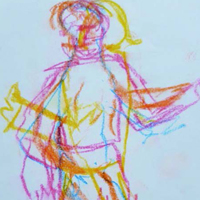Living with Parkinson’s disease and connected to the duodopa pump: A qualitative study

Accepted: 9 February 2021
All claims expressed in this article are solely those of the authors and do not necessarily represent those of their affiliated organizations, or those of the publisher, the editors and the reviewers. Any product that may be evaluated in this article or claim that may be made by its manufacturer is not guaranteed or endorsed by the publisher.
Authors
Parkinson’s Disease (PD) is a complex and heterogeneous disease that has a major impact on the lives of patients and their family caregivers. The duodopa pump is one of the treatments options for advanced PD. The experience of patients with this treatment is largely unexplored, however. This study is based on the experiences of patients with PD as well as their family caregivers using the pump. We take a multimodal approach that includes narrative semi-structured interviews and drawings. This methodology helps participants, particularly those with difficulty articulating themselves, express their experience with the disease and their perception of the treatment. We believe that the use of drawings complementing semi-structured interviews offers additional insights into the participants’ perception of PD and the pump. In this article we focus on the following topics: the participants’ perception of PD and the pump, the reasons for choosing the pump over alternatives, and the advantages and disadvantages of this treatment for patients and family caregivers. Our findings show that the participants consider PD as a complex and unpredictable disease that changed their lives and affect everyone differently, while the pump makes the disease less changeable and more manageable.
How to Cite
PAGEPress has chosen to apply the Creative Commons Attribution NonCommercial 4.0 International License (CC BY-NC 4.0) to all manuscripts to be published.

 https://doi.org/10.4081/qrmh.2020.9427
https://doi.org/10.4081/qrmh.2020.9427



